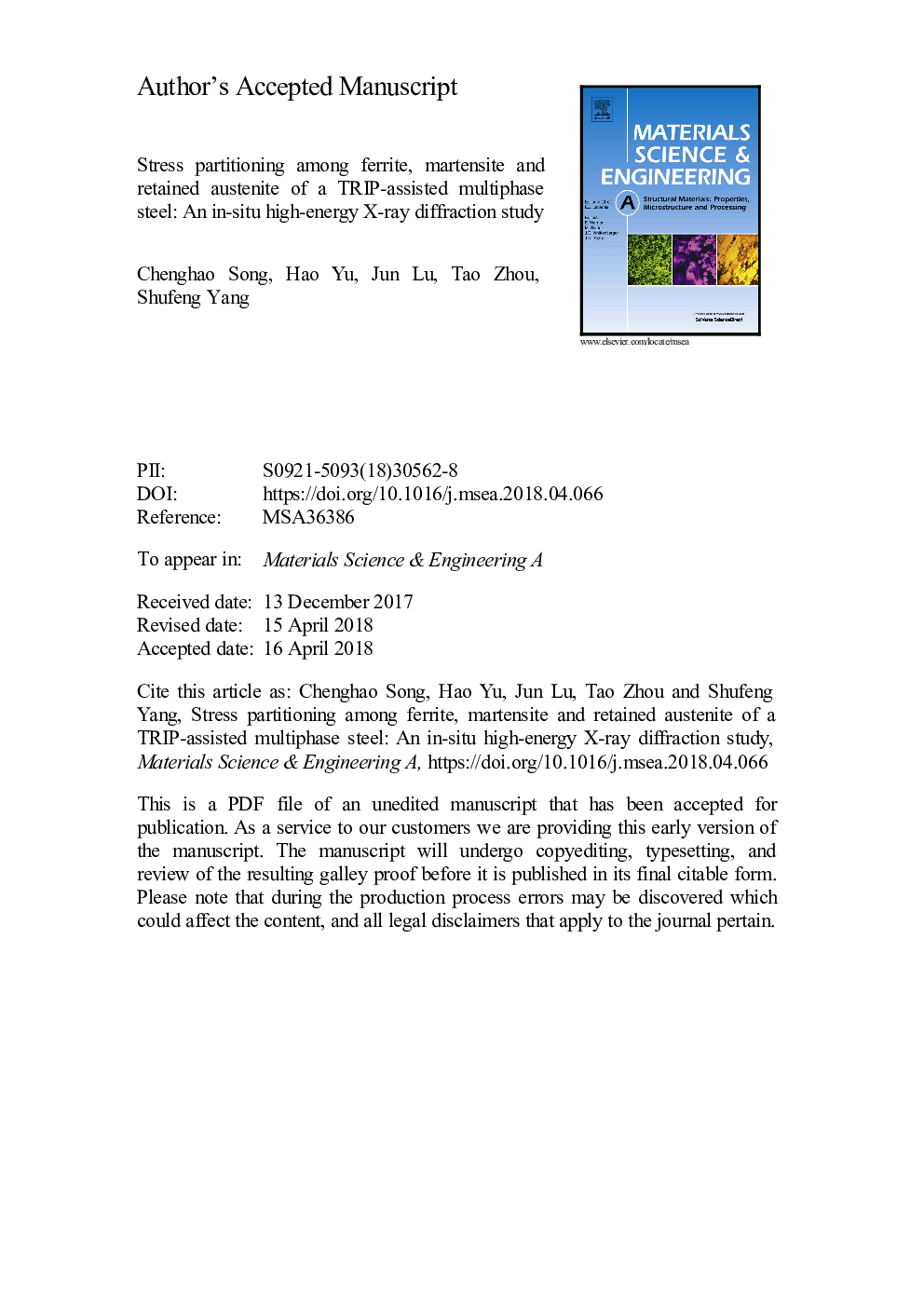| Article ID | Journal | Published Year | Pages | File Type |
|---|---|---|---|---|
| 7972148 | Materials Science and Engineering: A | 2018 | 18 Pages |
Abstract
The stress partitioning among ferrite, martensite and retained austenite, and the stability of retained austenite under uniaxial tensile loading of a TRIP-assisted multiphase steel are investigated using in-situ high-energy X-ray diffraction technique. The results indicate that the stress partitioning, mainly occurring in elastic and elastoplastic regions, is activated by the “stress feedback mechanism”. In the elastic region, the decline of increasing rate of ferrite stress is accompanied by the sudden increase of martensite and retained austenite stresses, which indicates a stress transfer from ferrite to martensite and retained austenite. During deformation, martensitic transformation first occurs in the retained austenite with low carbon content, followed by those with high carbon content, which is denominated “selective transformation mechanism”. In addition, the increment of average carbon content in retained austenite continuously increases with the gradual transformation of retained austenite into martensite. The evolution of retained austenite strain versus engineering stress is similar to that of martensite strain, except that austenite strain is higher than martensite strain at the end of uniform deformation, which is related to the high carbon content in retained austenite.
Keywords
Related Topics
Physical Sciences and Engineering
Materials Science
Materials Science (General)
Authors
Chenghao Song, Hao Yu, Jun Lu, Tao Zhou, Shufeng Yang,
